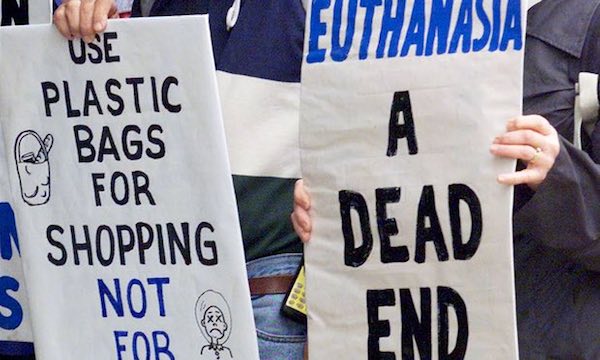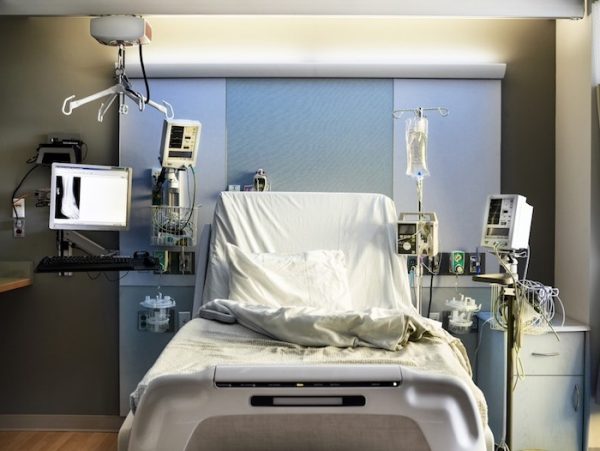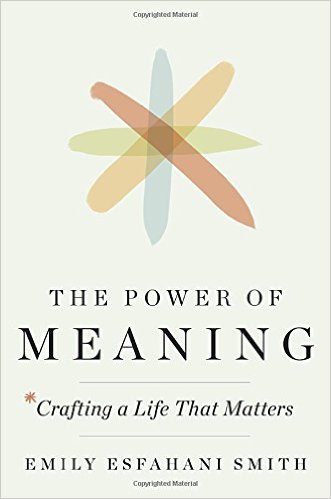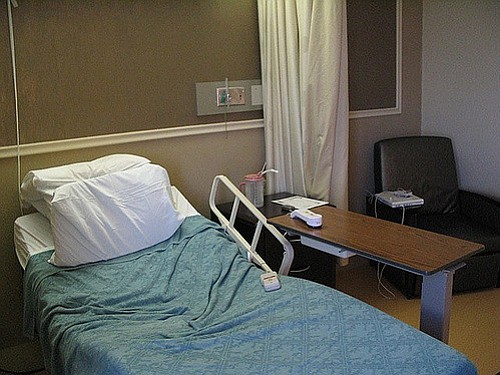A former hospice social worker reflects on his own father’s death and how to add meaning to the last moments of a life.
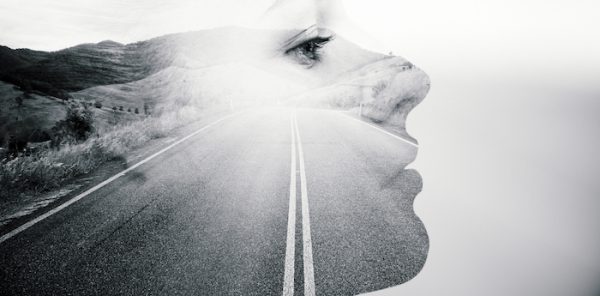
By Henry Fersko-Weiss
The End-of-Life Doula Approach
Dying from a terminal illness takes months, often years. As a dying person’s functional ability declines, the demands on caregivers increase. So, by the time the dying person’s body starts its final process of breaking down, the family is likely to be exhausted emotionally and physically. Yet, at this point, family feels called on to be even more present, because they recognize the end is near. They could use increased support, but professional medical help is only sporadically available—and often not there in the critical moments, when a new symptom appears or one worsens in a way the family wasn’t prepared for. If the dying person is at home on hospice care, a nurse, social worker, or chaplain will call at a crisis moment and even try to visit. But, due to the number of other patients they serve and the time it takes to get from one location to another, they often can’t respond quickly enough or actually get there when it matters most. The structure and logistics of hospice care just don’t allow for the best care at the very end of life.
The same is true if a person is dying in a hospital or other facility. While professionals may have easier access to a dying person—because they don’t have to travel to get from one patient to another—they are still limited by their shift schedules and the number of other patients they have to serve. On weekends and at night, when there are far fewer staff members, the problem gets even worse.
So, for the last hours to days of life, a dying person and the family may feel the full weight of the dying process on their shoulders and have minimal assistance. They can feel abandoned, alone, and ill-prepared. Their focus narrows to basic physical care, they stuff down their emotions as best they can, and they move through the experience in a disconnected daze. I have seen this over and over again in the families of dying people, and I experienced it in my own family when my father was actively dying fifteen years ago.
Even though my mother had hired an aide to help with my dad’s care in the last couple of months, she was hardly sleeping at night and on edge during the day as she saw to all my dad’s needs. My dad was ninety years old, and my mom was seventy-seven at the time. Until the last week or so, she maintained the household and went to work every day, managing a forty-story commercial building in the middle of Manhattan. My sister lived across town and helped out many days during the week. I lived an hour and a half away, so I could only get down once a week or, on occasion, two times in a week.
On the days I could be there during the last few weeks, I slept in a bed right next to my dad. I made my mom sleep on the couch in the living room, so she wouldn’t be disturbed during the night by every sound my father made or his slightest movement. But even with all this help, my mother was beyond exhausted.
Although my father went through his dying process years before I formulated the end-of-life doula approach, I was at that time a hospice social worker. Still, we as a family cared for my father and lived our daily lives behind a heavy drape of denial that kept out the truth of his dying. For a time, my sister clung to the idea that a new pinpoint radiation technology might cure him. For a long time, we all held on to the belief that we might hold death at bay and have more time with him. There were times when his decline seemed to pause. Although his functional deterioration was profound, in those times he seemed to hold his own against further descent toward death—and we would believe in our denial again. But then the process would continue, and the truth of his dying would break through our denial.
Four days before he died, we knew that death was close. He had stopped eating weeks earlier. Now he was “sleeping” all the time. It was painfully obvious that his body had entered the final process of breaking down; all his systems were failing. In those last days, my father’s dying process weighed on all of us considerably. We didn’t talk much about the feelings we were experiencing, but I could see it on my mother’s and sister’s faces, and I’m sure they could see it on mine. At least I knew enough about the process to inform my mother and sister about some of the signs and symptoms we witnessed. But I also remember wishing that a dispassionate outsider, one with more knowledge than I had, could be there to help us read the signs more clearly and to support us emotionally. Of course we supported each other the best we could, but it wasn’t really enough. I remember feeling very alone. And, during the last several days, I don’t remember the hospice nurse coming more than once—and then only for perhaps an hour.
I spent the entire night before my father died in the bed next to him. I remember that a lamp on the night table cast a pale yellow light across half the bed, leaving the rest of the room mostly dark. My father was a little restless, and the slightest movement or sound he made kept me from falling asleep. I didn’t know that night how close he was to dying, but it was clear that his death wasn’t far off, and thoughts of what life would be like without him kept swirling around in my head. All my life, my dad had been a gentle, sweet presence. Somehow I couldn’t imagine the world without him.
At 6:00 a.m. I left to go back home. It was a Thursday, and there was an event in my older son’s class that morning that I wanted to attend. But as soon as I arrived home, my wife told me that my mom had called to say that I should go back because my dad had taken a sudden turn for the worse. I kissed my kids and left without even washing my face or brushing my teeth.
When I reentered my father’s bedroom I saw that his limbs looked very stiff, and he didn’t move at all. The only motion in his body was the shallow rise and fall of his chest as he breathed—and each time he exhaled, his chest remained motionless for a long pause before the next inhalation. I settled into watching him, perched on the side of the twin bed just a foot from where he lay. For the next three hours his breath continued to slow, with longer and longer periods of apnea. In the late morning, the aide arrived and came to sit in the bedroom as well. My mother and sister came in at points and spent time sitting near him. Finally, my legs and back stiff from sitting, I decided to walk to the kitchen to stretch and get a drink of water. My sister and the aide were sitting off to the side near the windows, talking to each other. I was out of the room for at most three minutes.
As I stepped back into the bedroom, I saw that my father wasn’t breathing. I stopped in the entrance to the room, frozen by his stillness, waiting to see if the next in-breath would come before I went back to sitting at his bedside. After a minute of waiting, I realized that he wasn’t going to breathe again. My sister and the aide, who hadn’t been looking over at my dad, realized that I wasn’t coming farther into the room and asked me if he was gone. By now almost another minute had passed.
“I think so,” I said, then went to get my mom. We all huddled together on one side of the bed, holding each other and watching for several more minutes before we called the hospice nurse to let her know that my father had died. The nurse hadn’t visited him for the past three days.
Looking back, I don’t remember immediately feeling guilty about going to the kitchen and missing his last breath. My father had never talked about wanting us to be with him when he died. In fact, knowing my father, he would have only wanted his death to be as easy as possible for all of us. He would have said we should do whatever was best for us. But, as the fact that he had actually died became more real and we made preparations for his funeral, that feeling of guilt wormed its way into my thoughts, and I realized that unconsciously this had been important to me.
He was buried three days later, on a Sunday, with swirling flakes of snow like bits of paper falling from the sky. It was bitter cold for early April, chilling us as we stood around his open grave. I remember my wife clutching me as we huddled together with my mother and sister. The rabbi read prayers I didn’t understand, yet their rhythmic, melancholy sound was so familiar. There is something in Jewish prayer that always sounds to me like a cry from the heart, a cry of deep, unfulfilled yearning. I could feel that cry in my heart as I watched the flecks of snow starting to coat the top of the huge pile of orange-brown dirt at the side of the grave. I stopped hearing the prayers and turned inward, silently apologizing to my father for not staying next to him and holding his hand as he took his last breath.
In the days that followed, I found myself apologizing over and over again but not being able to let go of the guilt. When those thoughts came up, I would berate myself for going to the kitchen at just the time when he was dying. It felt as if I had abandoned him just as he needed someone who loved him to be at his side. Many months later, I finally arrived at a rationale that began to ease my guilt. I started to weigh those last moments of not being there against all the hours of caring for him in the seven months of his illness. I added into that equation the many times I had told him I loved and admired him.
Even though I came to accept that my not being present for my father’s last breath was okay, I still would rather have been present. In the years that followed my father’s death, I came to know the dying process a lot better. Now I can read the signs of imminent death. If my father were dying today, I would not leave his bedside when those signs were present. And now I teach those signs to other people so they won’t have to struggle with months of guilt as I did.
Not being present at the end of a loved one’s life is only one way a death can cause unnecessary anguish. Sometimes people end up going to the hospital, even though they didn’t want to die there; sometimes relationships that could be healed, or at least improved, are left hanging, because death is never discussed; sometimes the spiritual distress of the person dying goes unrecognized or unattended. All these failures, and many others, result in deaths with extra layers of suffering that could have been avoided.
It isn’t just the negative events and circumstances that make many deaths so unfortunate; there are missed opportunities for deeper meaning and greater comfort that most people don’t even realize can be part of the experience. Over the last one hundred or more years, as a result of the rise in hospitals and health-care technology, death and dying have become highly medicalized. There have been a number of regrettable side effects from this development. For one thing, people don’t attend to the internal impulse to explore the meaning of their life. For another, advances in technology and medicines extend life in a state of dramatically diminished quality, which only increases physical and emotional suffering for the dying person—and, by extension, for the family.
As a hospice social worker, I encountered these negative aspects of dying every day. They are what propelled me to contemplate a different approach to death and dying, which resulted in my formulating the end-of-life doula approach with its emphases on meaning, legacy work, planning, attention to the sacred nature of dying, alternative interventions for symptom management, intense involvement in the last days of life, reprocessing the experiences with loved ones after the death, and, finally, active involvement in early grief. This model has stayed fundamentally the same over the last thirteen years. Nonetheless, some aspects of it have evolved and become much more important as the movement it spawned has grown. I expect that it will continue to evolve as other developments in the field of death and dying are incorporated into the model.
The end-of-life doula approach encompasses three different areas of activity. The first of these involves the dying person reflecting on their life and planning for how they envision the last days of life to unfold. The second area centers on holding the space for the plan of those last days, when the body is finally breaking down. The last part of the program begins shortly after the person dies, as family and friends process their experiences of the dying time and begin their work on grief.
Reflection
According to developmental psychologist Erik Erickson, the impulse to reflect on one’s life is an inborn imperative that naturally occurs as a person 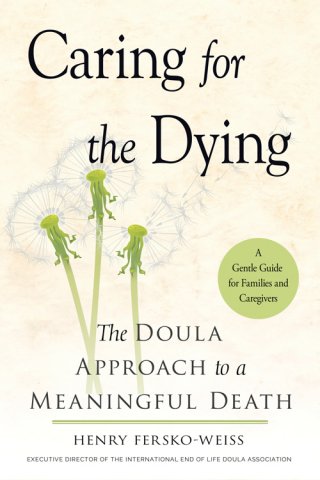 reaches the last stage of life: old age. Erickson saw different chronological periods of life presenting developmental challenges that led to either greater personality wholeness and a sense of well-being or poorer adaptation to the world and a contracted sense of self. He named each developmental stage with the words that defined the crisis at the center of its psychosocial challenge. He called the last stage of the lifespan “Ego Integrity vs. Despair.” At the heart of the conflict between ego integrity and despair are two questions: “Has my life had meaning?” and “Has my life been satisfying?” How a person answers these questions leads in the direction of either ego integrity or despair.
reaches the last stage of life: old age. Erickson saw different chronological periods of life presenting developmental challenges that led to either greater personality wholeness and a sense of well-being or poorer adaptation to the world and a contracted sense of self. He named each developmental stage with the words that defined the crisis at the center of its psychosocial challenge. He called the last stage of the lifespan “Ego Integrity vs. Despair.” At the heart of the conflict between ego integrity and despair are two questions: “Has my life had meaning?” and “Has my life been satisfying?” How a person answers these questions leads in the direction of either ego integrity or despair.
As a person faces a terminal diagnosis, I believe that they are automatically plunged into Erikson’s final developmental stage—no matter how old they happen to be at the time. I have seen dying people in their late twenties and earlier thirties wrestle with these questions as actively as people in their eighties and nineties.
If a dying person is able to attain ego integrity in the process of reflecting on their life, they come to feel proud of their accomplishments, understand the meaning contained in their life, and achieve a positive sense of completion. Further, they recognize the legacies they will leave behind. If a person fails at this developmental challenge, then they end up believing that their life was wasted; they settle into feelings of regret, bitterness, and despair.
The path to engaging the questions at the heart of this developmental stage involves introspection, journaling, reminiscence, life review, and, at times, deep exploration with other people. To do this work in a meaningful way, the person needs to approach it with a serious, structured examination. They have to look at both the accomplishments and things learned over the course of their life, as well as the failures, discarded beliefs, and unfinished business.
As the process unfolds, the dying person will naturally review the most important events in their life. They will examine how they felt about those events at the time, how they understand the impact of those events on their life, and what if anything they still may need to do in response to those events. Other areas of exploration involve themes that a person sees woven across the fabric of their experience, values that have become important to them, and things they learned—from either success or failure. All of this is fertile ground for understanding a person’s life.
The exploration into meaning can happen in dialog with a doula or family member; in moments of inner reflection, when the dying person is alone; in the effort to crystallize the meaning into a concrete legacy that can be passed on to others; and in discussion with family and friends, who can contribute a perspective the dying person may not fully recognize. Too often, this work of exploring meaning is left undone. If the dying person and the family are not openly discussing dying, or they are trying to maintain an air of normalcy, then reminiscence or life review tends to happen only in fleeting moments when the dying person is alone. Real examination of a person’s life needs structure to arrive at meaning. Without structure, despair is too often the outcome.
As a person explores the meaning of their life, it is natural to consider how that meaning might be expressed in a concrete way that the person finds satisfying; in a way that loved ones will find informative or inspiring. This expression of meaning is referred to as a legacy project. It can take the form of a memory book or an illustrated box that contains objects and/or cards with messages from family and friends. It can be an audio or video interview that focuses in a deep way on one or more aspects of a person’s life. It can be a life scroll that illustrates important moments or recurring themes. Or it might be a series of letters to current or future family members, expressing thoughts and wishes for them when they reach important milestones in their lives. The kinds of legacy projects people create are limited only by the imagination and creativity of those involved. Over time, these legacies become deeply valued family treasures, because they allow people to reconnect with the person after they have died and reengage with the meaning they identified.
A legacy project does more than express meaning. It preserves personal and, therefore, family history. It also gives a dying person the opportunity to exercise more control over how they spend their time in the last months or weeks of life. Loss of control over many aspects of life is a common complaint in severe illness and approaching death. Any way you can return some measure of control is therefore very helpful to the emotional state of the dying person and improves the quality of their life.
Too often, a dying person is treated as if they have already died. Their opinions, ideas, or advice about family events or issues is no longer solicited; they are left out of everyday decisions or ones that involve planning for the future. Creating a legacy project gives back to a dying person the power of who they are and returns their relevance to those around them. After they die, the legacy continues to speak for them, to tell their story, express their values, to convey their hopes for those who survive them or who may be born long afterward.
Complete Article HERE!
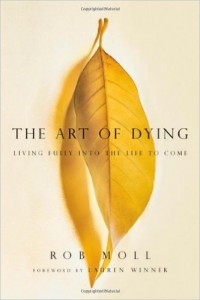 mercifully. It will be preceded by longer periods of physical pain and emotional distress, by the contemplation of severed relationships and work left unfinished, and perhaps by spiritual turmoil or emptiness. And then there’s the lingering impact on family, friends, colleagues, caregivers, medical professionals…
mercifully. It will be preceded by longer periods of physical pain and emotional distress, by the contemplation of severed relationships and work left unfinished, and perhaps by spiritual turmoil or emptiness. And then there’s the lingering impact on family, friends, colleagues, caregivers, medical professionals…


